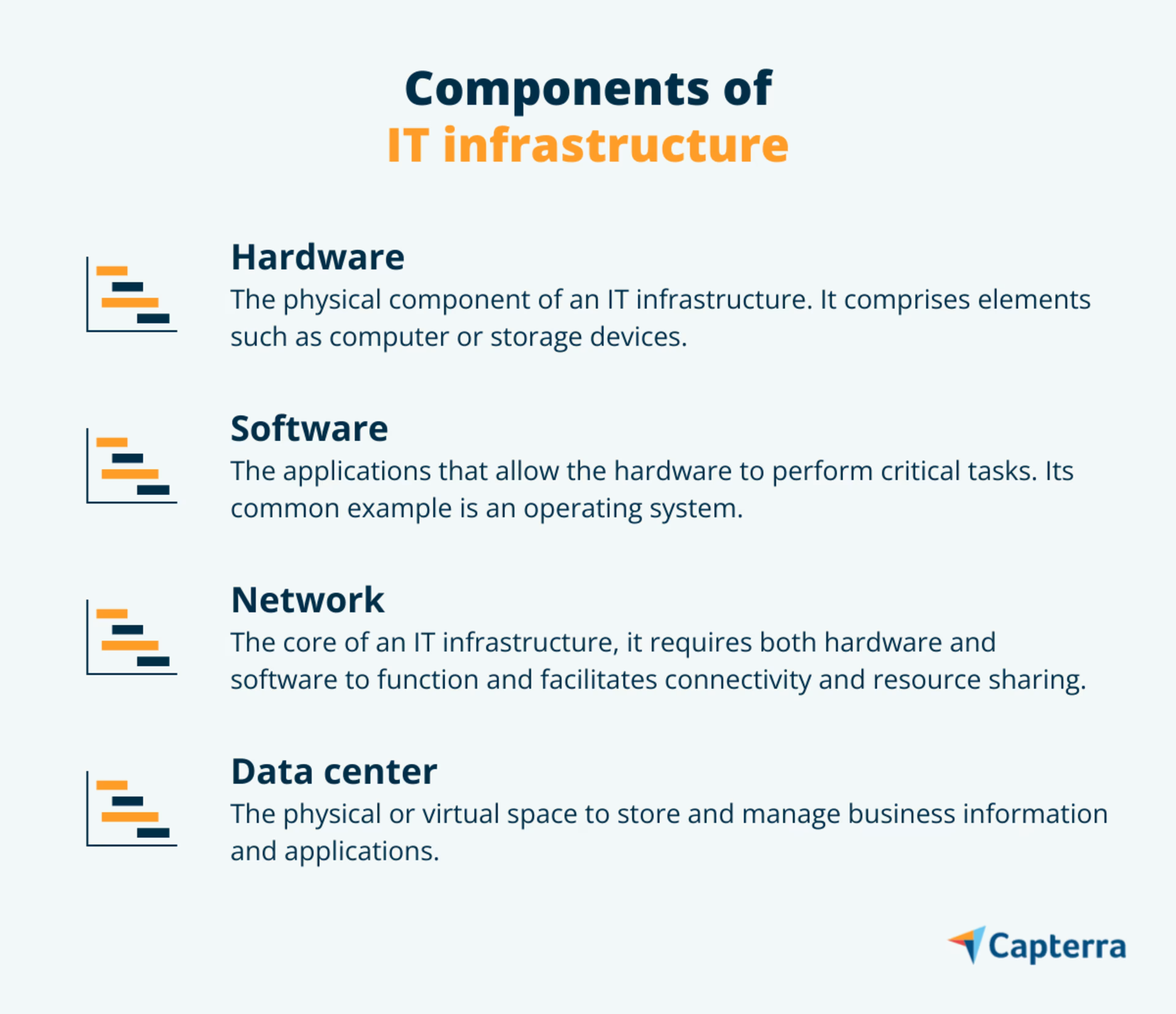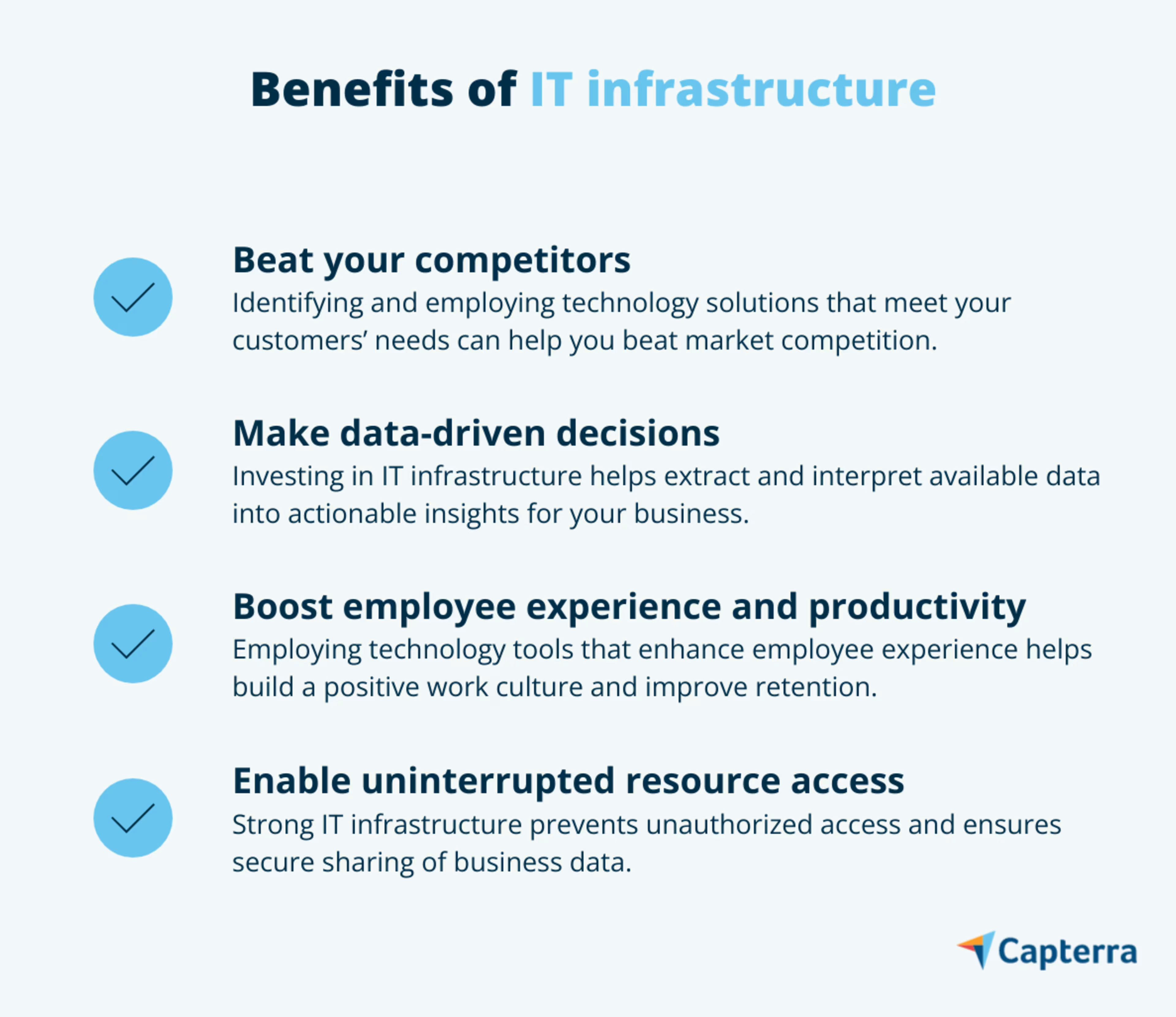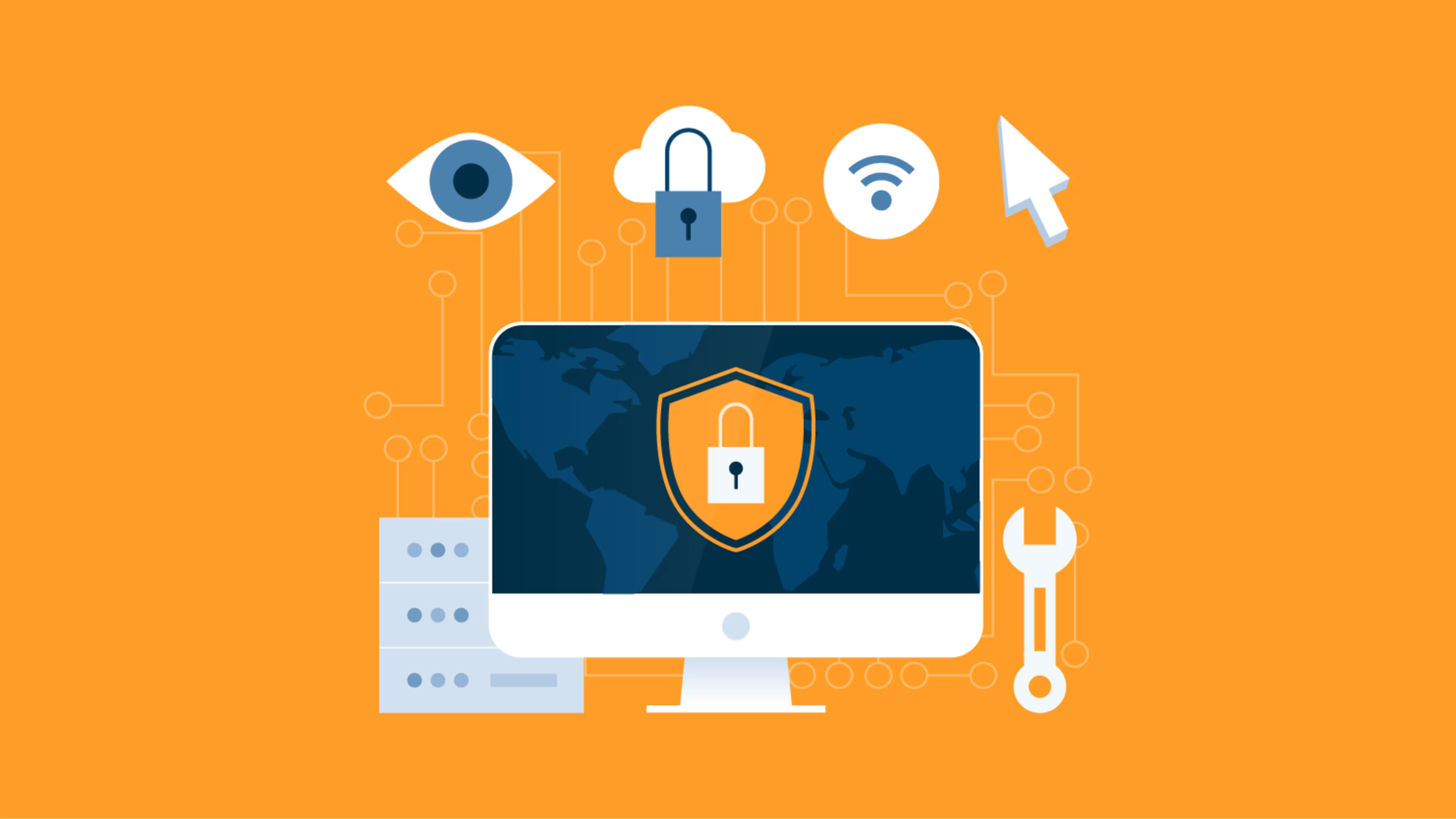Strong IT infrastructure helps optimize IT operations and enhance security.
Just like countries depend on physical infrastructure to offer citizens access to basic resources such as roads and railroads, businesses depend on IT infrastructure to let employees use technology effectively to do their jobs.
Your business’s IT infrastructure includes hardware and software resources such as desktops, software apps, and networks. If the IT infrastructure is poorly set up, your employees won’t be able to use these resources effectively, which could impact productivity and cost you more bucks in the long run.
Adequately set up IT infrastructure ensures effective IT operations and also helps your business stay relevant to the changing technology landscape. Aging or inadequate IT infrastructure lacks the ability to meet the evolving technology needs of your business as well as customers.
If you’re responsible for setting up, maintaining, or upgrading the IT infrastructure of your business, this blog is for you. We explain why it’s critical to invest in IT infrastructure and how it helps your small business make informed decisions.
What is IT infrastructure?
Information technology infrastructure, or IT infrastructure, is a group of IT components—hardware, software, networks, and resources—that work together to help develop, test, deliver, monitor, control, and support a business’s IT environment. Well-managed IT infrastructure enables operational continuity in a business and ensures better connectivity, productivity, and security.
IT infrastructure should be regularly updated in line with technology advancements. Up-to-date infrastructure is reliable, secure, and helps meet business goals—offering a competitive market edge. The right IT infrastructure also protects against cyberattacks, downtime, and other events that hamper smooth business operations.
What are the components of IT infrastructure?
These four IT infrastructure components work in sync to ensure uninterrupted operations and productive business workflows:
Hardware is the physical component of IT infrastructure. It comprises elements such as servers and storage devices that form the base for an optimal enterprise IT environment. Software solutions cannot effectively run without suitable hardware.
Software is the application that allows the hardware to perform critical tasks. The basic software component is the operating system, which brings devices such as laptops, computers, and smartphones to life. Then there are supporting software solutions such as asset management that enable smooth business operations.
Network is the core of IT infrastructure and requires both hardware and software to function. It enables internal and external communication within a business environment to connect assets, employees, and customers. Having a strong network infrastructure facilitates connectivity, resource sharing, and security.
Data center is a physical or virtual space to store, analyze, and manage business information and applications. It comprises a network of computer and storage systems that provides users secure, uninterrupted access to information and applications.
Knowing just the definition of the IT infrastructure components is not enough. You also need to understand the role and responsibility of each of the components that come into play to get the job done. Read our insight on the 5 IT Infrastructure Components You Should Know About.

Find providers that can help with your business needs by using our lists of IT services agencies by location.
What are the types of IT infrastructure?
Let’s discuss the different types of IT infrastructure that you can consider setting up for your business.
1. Traditional IT infrastructure
Traditional infrastructure has components such as hardware and software that require more power and physical space to operate. Also known as on-premise infrastructure, it’s installed at the business location for private use. This means that it’s built, owned, and managed by the business at its facility.
2. Cloud IT infrastructure
Cloud infrastructure refers to components such as hardware and software that are required for cloud computing. All infrastructure components are pooled from different sources and managed through a single cloud architecture, which can be either public or private. Cloud infrastructure is better equipped to support the distributed (remote, hybrid, and in-office) environment of today’s digital workplaces.
Software-as-a-service (Saas), platform-as-a-service (PaaS), and infrastructure-as-a-service (IaaS) are the different types of cloud infrastructure services. In the cloud infrastructure model, businesses rent software, infrastructure, and services from a third-party cloud provider and access them through the internet.
3. Hyperconverged IT infrastructure
Hyperconverged infrastructure (HCI) is the integration of software and servers into a distributed infrastructure, such as a public cloud, to offer a unified platform. HCI uses intelligent software solutions that replace traditional IT infrastructure components such as separate servers and storage space with modern-day solutions such as cloud computing. This minimizes the space and budget-related challenges associated with traditional infrastructure components.
Why is IT infrastructure important for your business?
Think of what could happen to your business without an IT infrastructure:
Higher risk, as outdated systems are prone to failure and cyberattacks.
Missed technology advances that result in better performance and deliver greater business value.
Disrupted work processes due to lack of adequate technology to manage work remotely or handle events such as asset failure.
If you’re holding back on investing in IT infrastructure, you are missing out on increased productivity, enhanced security, reduced risk, and a lot more. Let’s discuss these benefits in detail.
Want to learn more before hiring an IaaS provider? Our list of the top IaaS providers and their features will help you narrow your search. Read more in Capterra’s IaaS providers hiring guide.

Beat your competitors
Technology is a key factor differentiating your business from its competitors. Customers look for vendors that are technically capable of catering to their requirements.
Investing in IT infrastructure can help you beat market competition. All you need to do is identify and employ technology solutions that meet your customers’ needs. It could be as simple as building a website that is easy to navigate and provides relevant information about your offerings or using customer engagement or customer experience solutions to boost client satisfaction.
Make data-driven decisions
Besides technology, your business needs data to succeed. By investing in IT infrastructure, you can extract and interpret available data into actionable insights for your business. This data could be website traffic, page views, or social media interactions.
Software solutions such as data analytics and big data collect data in real time to help make informed decisions—based on the analysis of the collected data. These tools keep track of important metrics and store data from multiple sources. The insights can help you understand customer behavior, optimize customer experience, monitor website traffic, and assess the overall health of your business.
Boost employee experience and productivity
To ensure smooth business operations, employee experience and productivity should go hand in hand. The inability of employees to upskill themselves or enhance their work experience can lead to dissatisfaction, resulting in reduced productivity and efficiency.
Invest in technology tools that allow your employees to enhance their work experience. Software solutions such as employee engagement, team collaboration, employee recognition, and learning experience can help build a positive work culture, boost engagement, and improve retention.
In its 2021 Employee Experience survey, Capterra asked respondents about the impact of technology on their job satisfaction. Survey results highlight that employees who can improve and enhance their work experience—including the software they use—are 52% more satisfied with their job than those who cannot. (Read the survey methodology here.)
Organize training sessions and workshops to ensure employees can use the new technology you’ve introduced at the workplace. As the end-users, they should understand the importance and functions of the new tools and how they will help deliver quality results.
Provide secure and uninterrupted resource access to stakeholders
You keep your work documents in a safe, locked space, right? Similarly, you should keep your data center—where you store all business data—safe from unauthorized access, especially in a distributed digital environment.
Use software applications such as cybersecurity, network security, computer security, and email security to securely share or access business data. Choose these security tools based on your needs and IT infrastructure model. Say, you use the cloud-based IT model to share critical data via emails. In this case, you should invest in both cloud security and email security solutions.
Invest in IT infrastructure to ensure steady business growth
If manually tracking and updating your IT infrastructure services and systems seems a challenge, why not try automation solutions? Be sure to check the pros and cons of automation if you decide to adopt it to enhance your legacy IT infrastructure.
The bottom line of your business, regardless of its size, lies in technology. This explains the importance of having efficient IT infrastructure management. But IT infrastructure management is not a one-time investment; your business needs and the technology landscape will keep changing.
Update your IT infrastructure services and systems regularly to keep them flexible, reliable, and secure. Not doing so can lead to challenges such as information security breaches and system downtime.
